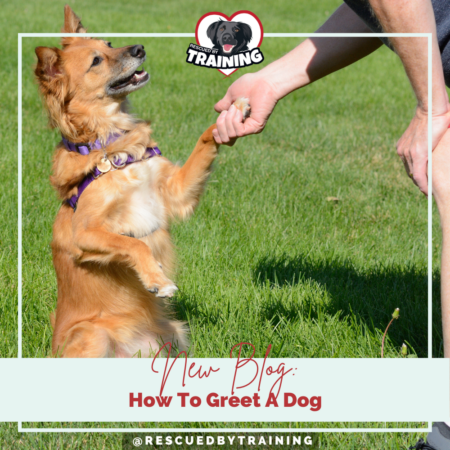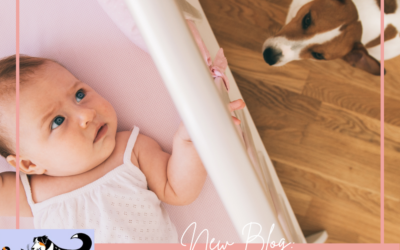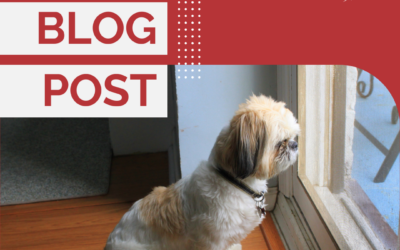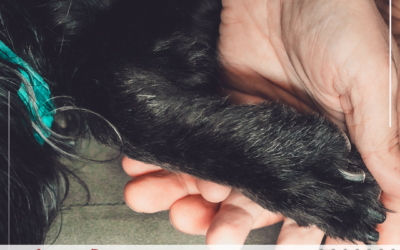People mean well. I know they do, but there’s many old ways of interacting with dogs that we were once thought to be the right way, but aren’t. One of these myths is that when we meet a dog we should present our hand “for them to sniff.” And, I have a request about that. Please stop. And please stop teaching your children that the way to greet a dog is to stick their hand out for the dog to sniff.
This is closely related to the idea that we should try to hand feed dogs if they’re fearful to somehow show we’re not a threat. I’ve covered that topic here and nearly every client that comes to me with a dog who is afraid of strangers tells me at one point they’ve tried to get people to hand feed their dog. And I get it. We’ve been told that food is the way to train dogs and to get them to like things. And that’s right. Except it’s missing the critical piece that in order to hand feed a dog, the person – the very thing your dog is afraid of – needs to get into your dog’s personal space to deliver the food. If you have a dog who is afraid of strangers, this proximity automatically puts your dog over threshold and puts that stranger within biting range.
This is the same with putting your hand out to let the dog smell you. Dogs have an incredible sense of smell. We have around six million smell receptors and dogs have an astounding 300 million. You do not need to stick your hand into their face for them to smell you. And by doing this, if the dog is afraid, you’re just confirming that, because now you’ve invaded the dog’s personal space. Even if the dog isn’t necessarily afraid, by sticking your hand out in their personal space, you’ve removed their option to consent to have an interaction.
People often ask “What’s the best way to greet a dog?” and they’re surprised when I say, “You don’t. Dogs are social creatures. If they want to have an interaction with you, you’ll know.” Dogs who are social and want to be touched will be very clear in their body language. We’ve all seen wiggly, happy dogs who clearly want interaction. And by all means, greet that dog. But the dogs who don’t proactively initiate contact or don’t communicate with their body language that they are looking for an interaction – those dogs should be left to decide if you’re safe or not and left to decide if, or when, they want to have an interaction. This is why I like to train consent cues and teach dogs they can always say no and opt out if they are uncomfortable.
A caveat – some fearful dogs will approach and that doesn’t mean they want an interaction. Some will approach with the intent of creating distance to make you go away because they think you’re scary. Those dogs may lunge, jump or otherwise communicate they’re uncomfortable. Other fearful dogs may approach to investigate – sort of a “fact-finding” mission, to determine if you’re safe. These dogs may be a little conflicted. They may sort of want an interaction but they’re unsure. Often we will see a “stretch investigation” where they stretch the front part of their body to sniff or get close but their back legs are planted in case they need to make a getaway. If you suddenly reach down to pet or try to feed the dog, you’ve likely just confirmed to the dog by invading their personal space, that you’re not safe.
Let’s think of it like this. You’re walking through Times Square and you see an odd character. You watch from a distance, and then get a little closer to get a better look. Suddenly that weird (possibly scary) character rushes up to you and gives you a big hug. You probably weren’t prepared for that and that uninvited interaction wasn’t very welcome or positive.
Reading body language, knowing your dog’s subtle stress signs and knowing when to help give your dog a break is also really important. Don’t wait for your dog to be growling, lunging, barking or snarling to relieve them. If you need help understanding dog communication, download my free handout here.
What’s the best way to greet a dog?
- Ask the owner if the dog likes to meet new people. If the owner hesitates or isn’t 100% enthusiastic, keep moving. If the owner is pulling the dog towards you to have a greeting, move on.
- Invite the dog. Tap your leg, use a little high pitched voice to encourage the dog to come to you, watching the body language the whole time. If the dog moves towards you with loose, possibly waggy body language, then go ahead and greet. If the dog doesn’t move or does a stretch investigation, respect that choice and move on.
- Monitor the body language. If the dog approaches but then head ducks, turns their head away, or backs up when you go to reach to pet, stop, happy talk, say thanks anyway and back away.
- Pat the dog. Ask the owner if the dog has favorite places to be pet or places they don’t like being touched. Keep in mind, we normally gravitate petting the top of a dog’s head, but many dogs don’t like head pats or hands coming down from above where they can’t see. Often you’ll see someone reaching to pet a dog on the top of their head and the dog moves his head up to try to watch where the hand is going. Neck, chin, sides and back are often safer zones for petting.
- No restraint. Don’t hug, kiss or otherwise restrain the dog. One of my favorite Family Paws sayings is “one hand enough – two hands too rough.” Petting with two hands can feel restraining to a dog, like when they’re at the vet and are being restrained. So keep your petting to one hand.
But let’s please stop sticking our hands out for unfamiliar dogs to sniff. And even more importantly, stop teaching kids that this is how they should greet a dog. I am a licensed Family Paws Parent Educator and a Family Dog trainer, so if you are struggling with dogs and kids, I can help. Whether you’d expecting a baby (download my free Introducing Dog and Baby handout here!), have a toddler, have a new dog and kids and want to get off on the right foot or have a dog who is already showing fear or aggression towards kids, you can schedule your one on one session here!
And, be sure to sign up for my free weekly newsletter so you don’t miss out on free tips, videos, personal stories, client successes and more!
Happy training!
![]()




